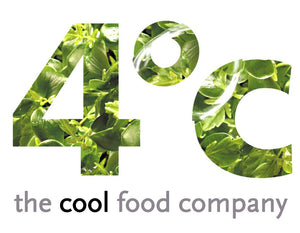{"id":7470125318320,"title":"Purple Cauliflower (Each)","handle":"purple-cauliflower-each","description":"\u003cstrong\u003eDescription\/Taste:\u003c\/strong\u003e\u003cbr\u003ePurple cauliflower, with its vivid deep purple hue, owes its striking appearance to the antioxidant anthocyanin, also found in red cabbage and red wine. Texturally similar to white cauliflower, it offers a crisp bite when raw and becomes tender when cooked. The flavour of purple cauliflower is mildly sweeter, with a touch of nuttiness that becomes more pronounced when roasted.\u003cbr\u003e\u003cbr\u003e\u003cstrong\u003eSeasons\/Availability:\u003c\/strong\u003e\u003cbr\u003eIn the UK, purple cauliflowers are available for much of the year, peaking from late summer to early winter. While locally grown purple cauliflowers can be found, to meet the demand, they are also imported from various European countries throughout the year. Their unique colour and nutritional benefits have led to a rise in their popularity.\u003cbr\u003e\u003cbr\u003e\u003cstrong\u003eUses \u0026amp; Flavour Pairings:\u003c\/strong\u003e\u003cbr\u003ePurple cauliflower can seamlessly replace traditional cauliflower in most dishes. Its vibrant hue makes it a standout in salads, pickles, and crudité platters. When cooked, it largely retains its colour, making dishes visually appealing. It pairs harmoniously with bold flavours like garlic and citrus, as well as with milder ingredients like butter, cream, and cheese.\u003cbr\u003e\u003cbr\u003e\u003cstrong\u003eHistory:\u003c\/strong\u003e\u003cbr\u003ePurple cauliflower is a natural variant of the white cauliflower. Although cultivated for some time, its popularity has surged in recent years, especially among chefs and home cooks seeking visually appealing and nutritionally rich vegetables. In the UK, purple cauliflower has been celebrated as a colourful alternative to its white counterpart, providing both novelty and a splash of colour to traditional dishes.","published_at":"2024-02-07T18:29:12+00:00","created_at":"2024-02-07T18:29:13+00:00","vendor":"Osolocal2U","type":"Vegetable Cauliflower","tags":["Bulk Update 081020","BULKUPDATE120821","Gee Fresh Produce Review List","GENERIC"],"price":825,"price_min":825,"price_max":825,"available":true,"price_varies":false,"compare_at_price":null,"compare_at_price_min":0,"compare_at_price_max":0,"compare_at_price_varies":false,"variants":[{"id":43169090502832,"title":"Default Title","option1":"Default Title","option2":null,"option3":null,"sku":"CAUPE","requires_shipping":true,"taxable":false,"featured_image":null,"available":true,"name":"Purple Cauliflower (Each)","public_title":null,"options":["Default Title"],"price":825,"weight":0,"compare_at_price":null,"inventory_management":null,"barcode":"","requires_selling_plan":false,"selling_plan_allocations":[],"quantity_rule":{"min":1,"max":null,"increment":1}}],"images":["\/\/4degreesc.com\/cdn\/shop\/products\/PurpleCauliflower.jpg?v=1707330553"],"featured_image":"\/\/4degreesc.com\/cdn\/shop\/products\/PurpleCauliflower.jpg?v=1707330553","options":["Title"],"media":[{"alt":null,"id":26013755539632,"position":1,"preview_image":{"aspect_ratio":1.407,"height":724,"width":1019,"src":"\/\/4degreesc.com\/cdn\/shop\/products\/PurpleCauliflower.jpg?v=1707330553"},"aspect_ratio":1.407,"height":724,"media_type":"image","src":"\/\/4degreesc.com\/cdn\/shop\/products\/PurpleCauliflower.jpg?v=1707330553","width":1019}],"requires_selling_plan":false,"selling_plan_groups":[],"content":"\u003cstrong\u003eDescription\/Taste:\u003c\/strong\u003e\u003cbr\u003ePurple cauliflower, with its vivid deep purple hue, owes its striking appearance to the antioxidant anthocyanin, also found in red cabbage and red wine. Texturally similar to white cauliflower, it offers a crisp bite when raw and becomes tender when cooked. The flavour of purple cauliflower is mildly sweeter, with a touch of nuttiness that becomes more pronounced when roasted.\u003cbr\u003e\u003cbr\u003e\u003cstrong\u003eSeasons\/Availability:\u003c\/strong\u003e\u003cbr\u003eIn the UK, purple cauliflowers are available for much of the year, peaking from late summer to early winter. While locally grown purple cauliflowers can be found, to meet the demand, they are also imported from various European countries throughout the year. Their unique colour and nutritional benefits have led to a rise in their popularity.\u003cbr\u003e\u003cbr\u003e\u003cstrong\u003eUses \u0026amp; Flavour Pairings:\u003c\/strong\u003e\u003cbr\u003ePurple cauliflower can seamlessly replace traditional cauliflower in most dishes. Its vibrant hue makes it a standout in salads, pickles, and crudité platters. When cooked, it largely retains its colour, making dishes visually appealing. It pairs harmoniously with bold flavours like garlic and citrus, as well as with milder ingredients like butter, cream, and cheese.\u003cbr\u003e\u003cbr\u003e\u003cstrong\u003eHistory:\u003c\/strong\u003e\u003cbr\u003ePurple cauliflower is a natural variant of the white cauliflower. Although cultivated for some time, its popularity has surged in recent years, especially among chefs and home cooks seeking visually appealing and nutritionally rich vegetables. In the UK, purple cauliflower has been celebrated as a colourful alternative to its white counterpart, providing both novelty and a splash of colour to traditional dishes."}

